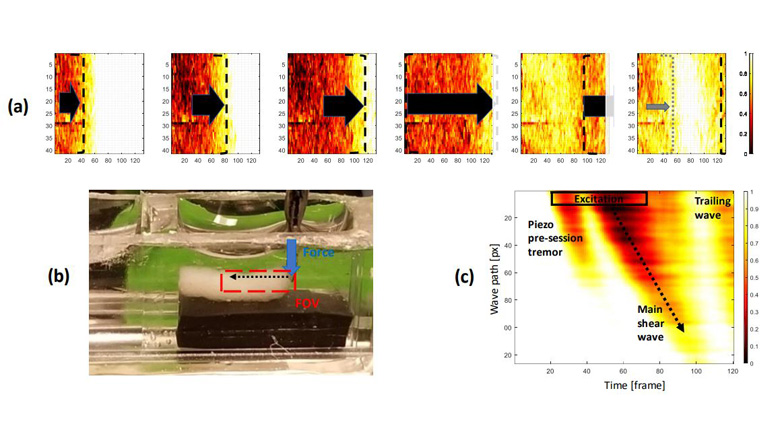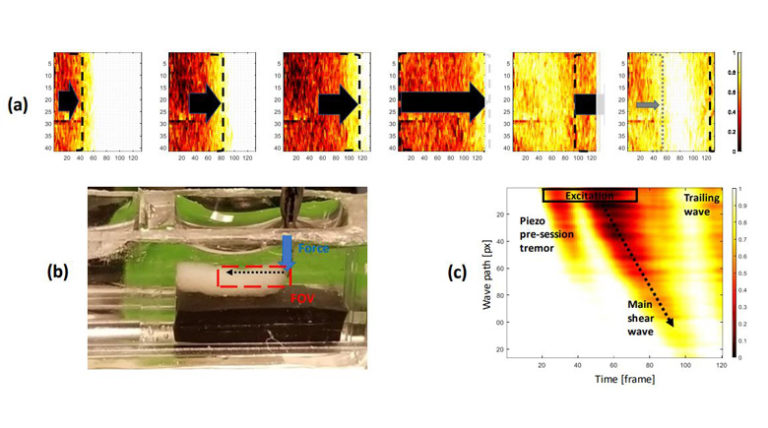
Abstract:
Chemical fixation is the slowest and often the most uncontrolled step in the multi-step process of preparing tissue for histopathology. In order to reduce the time from taking a core needle biopsy to making a diagnosis, a new approach is proposed that optically monitors the common formalin fixation process. A low-cost and highly-sensitive laser speckle imaging technique is developed to measure shear wave velocity in a biospecimen as small as 0.5 mm in thickness submerged in millifluidic channels. Shear wave velocity, which is the indicator of tissue mechanical property and induced by piezoelectric-actuation, was monitored using gelatin phantom and chicken breast during fixation, as well as post-fixed liver and colon tissues from human. Fixation levels in terms of shear wave velocity increased by approximately 271.0% and 130.8% in gelatin phantom and chicken breast, respectively, before reaching the plateaus at 10.91 m/s and 7.88 m/s. Within these small specimens, the plateaus levels and times varied with location of measurement, and between gelatin and chicken breast. This optical-based approach demonstrates the feasibility of fine-tuning preanalytical variables, such as fixation time, for a rapid and accurate histopathological evaluation; provides a quality metric during the tissue preparation protocol performed in most pathology labs; and introduces the millifluidic chamber that can be engineered to be a future disposable device that automates biopsy processing and imaging.

